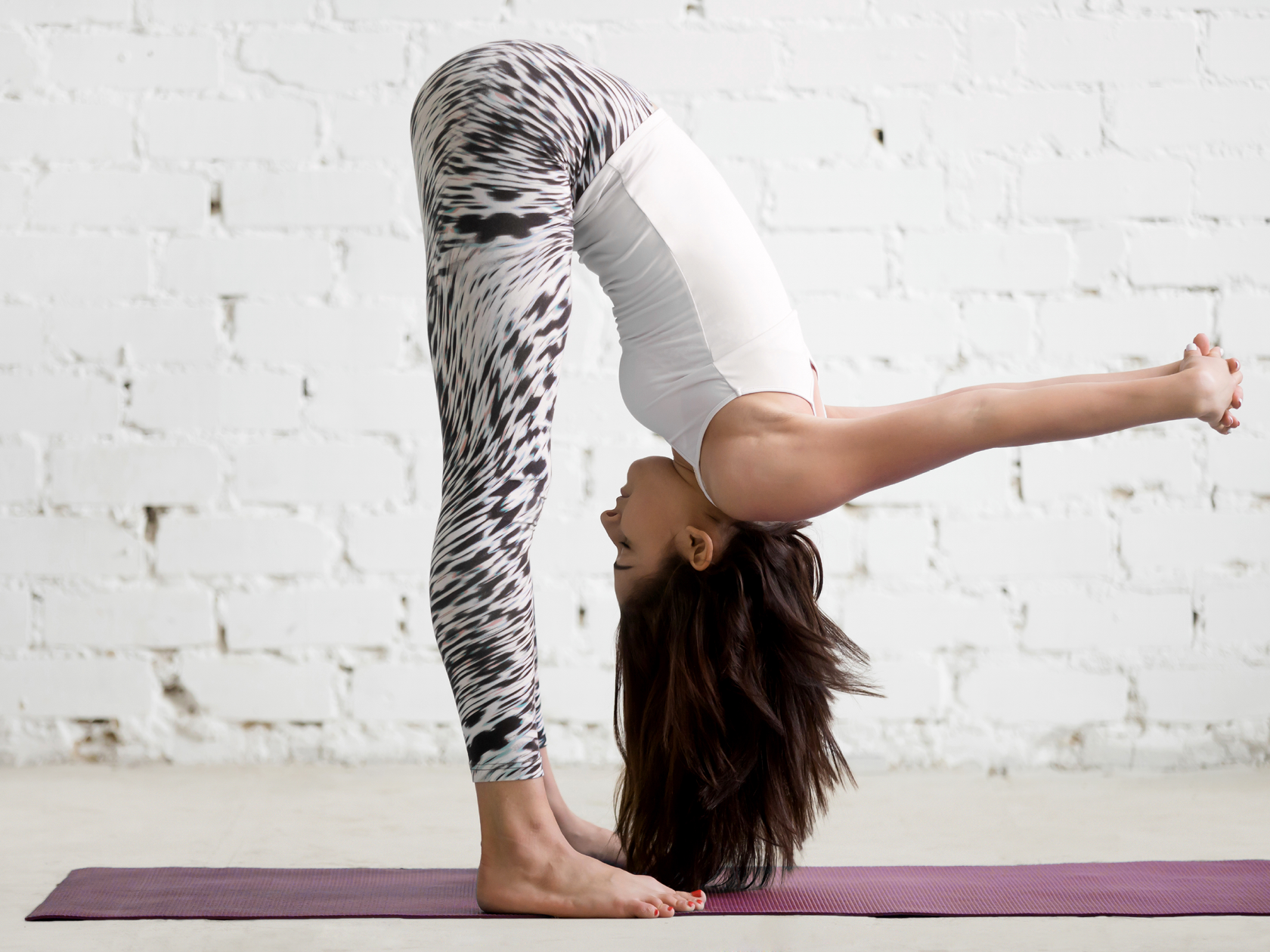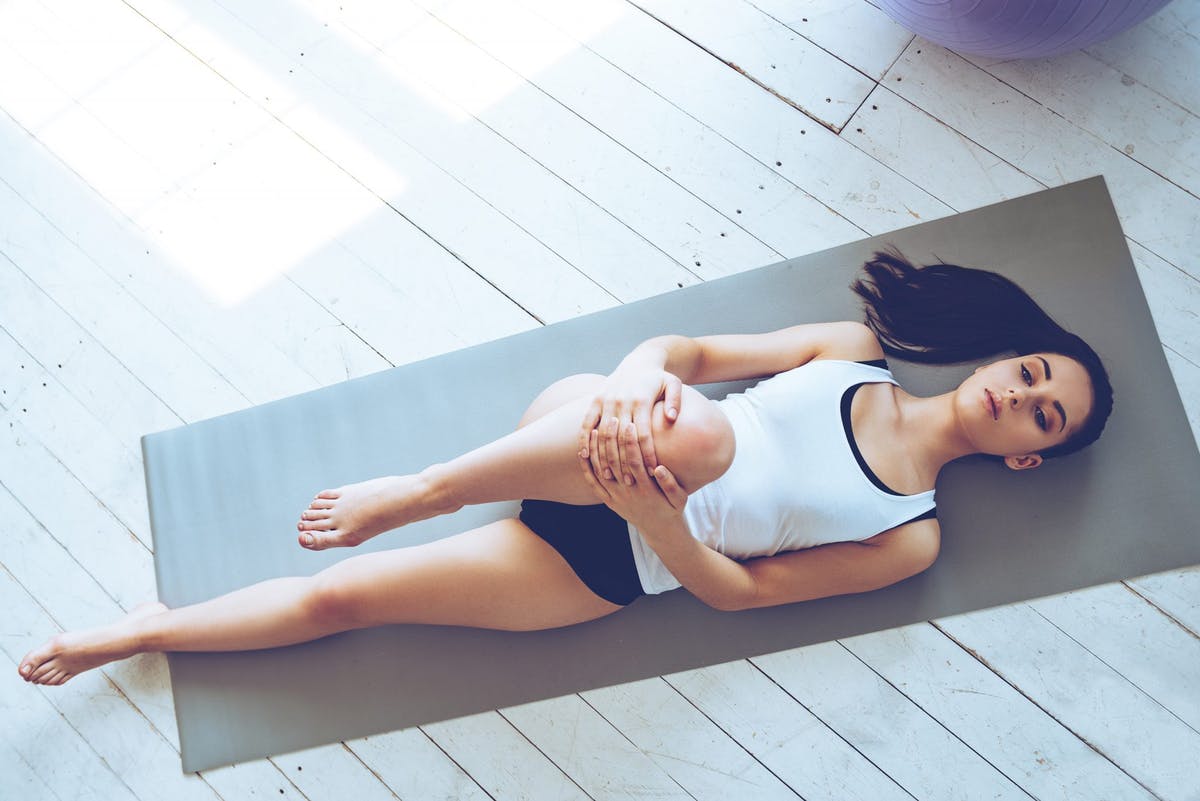Get rid of muscle stiffness and improve flexibility with this easy three step stretching routine.
We’ve all been guilty of skipping stretching after a class or workout. While we readily incorporate cardio for endurance and weights for strength, flexibility is often thought of as a by-product in our exercise regime. But what if we treated stretching as the starring role in our training sessions, rather than the supporting act? Stretching is, after all, so important in helping us to prevent injury.
“A stretching routine can help to keep us healthy, youthful, have good posture, prevent injury, increase recovery and also feel better in ourselves,” Suzanne Wylde, founder of Moving Stretch and the author of Moving Stretch: Work Your Fascia to Free Your Body tells us. That’s a whole lot of benefits for a part of our fitness that tends to be overlooked.
But I think a lot of us can agree that flexibility doesn’t always come easy – it takes effort and practice. If you’ve ever felt a pang of envy at the contortionist on the yoga mat next to you, you’ll know how frustrating it is when your body defies your will to bend and flex on command. But it’s not just yogis who can benefit from limbering up. A well-stretched muscle can more easily achieve its full range of motion, and therefore vastly improves athletic performance, Suzanne explains.
You may also like
Stretching: the two types of stretches you should include in your workout routine
It didn’t always used to be this way. As children, we didn’t think twice about kicking our legs high or spontaneously collapsing into box splits. So, what has changed?
“As children we are physiologically set up for flexibility, but as we go through puberty and enter adulthood this diminishes for most of us as we become much more sedentary,” Suzanne says. “The “use it or lose it” adage is very relevant because as we move less, we lose not only strength and range of motion, but experience a natural decrease in tissue quality and hydration. This also applies to our fascia, tendons, ligaments and bones. Moving in a variety of ways throughout the day helps to circulate blood and fluid around our bodies and challenges our tissues to stay healthy and strong. If we sit for too long without that movement, we tend to become weaker, stiffer, tighter and less healthy overall.”
From Netflix binges to desk-bound days, the average Brit spends 4-6 hours a day sitting – setting our muscle tissues in certain positions for long periods of time. This then leads to knots, aches, pains and particularly tight hip flexors and quadriceps.
“A very basic test of your tissue elasticity and hydration is to pinch your skin and see how quickly it returns to its original shape. In older people this can take as long as 20 seconds, demonstrating how much elasticity they have lost since they were children. It’s this change in the hydration and elasticity of our tissues, as well as losing the range of motion we do not regularly use, that causes us to lose flexibility as we age,” Suzanne says.

Although sticking around for your post-workout stretch is always a good idea, a quick quad pull isn’t going to cut it if you want to see real results.
“To maintain our flexibility, it’s not just a case of stretching our hamstrings. It’s sensible to take a holistic approach,” says yoga and pilates teacher Angie Newson. “Our muscles need to be flexible, limber and strong so general mobilising first thing in the morning to warm the body, followed by a simple stretching routine, will wake up the fascia (the connective tissue that surrounds our organs, muscles and blood vessels) and muscles for the day ahead. In addition, it raises energy levels, increases the range of joint movement and gets the blood pumping.
After working out, it’s a great feeling to lengthen the muscles to enhance flexibility, promote healing and prevent injury – rather than leaving them pumped up and shortened. As a daily routine, start by moving the spine in all its directions, to warm up the body from your tailbone to your neck, while stretching your hips and your leg muscles to prevent back pain. Move on to your limbs and extremities, remembering that wrists, hands, ankles and feet need to be stretched as well.”
By incorporating short bursts of stretching into our everyday life, Suzanne assures us that it will soon become second nature. “Having the right attitude is really important for making sustainable and healthy changes that will get us results that last for a long time. Approaching our body as a helpful coach rather than a bully may help us to remember that the body only changes when it feels safe, and forcing ourselves beyond a healthy range of motion (i.e. causing pain) is much more likely to lead to injury than flexibility. I recommend doing a stretching session at least three times a week, either after your workout or at any time of day – except the 40 minutes before exercise.”
Adding resistance to your stretching sessions strengthens you at the same time, but also engages more of your body – and therefore has a benefit on a much wider area than when you set out to stretch one muscle. Some people prefer static stretching, where you reach as far as you can and hold. Although it can improve range of motion, I feel that you miss out on challenging your tissues which is part of what helps to keep them hydrated and elastic.”
You may also like
Stretching: 8 best stretches to do at home for better posture
To get the most out of your efforts, Angie recommends including a martial arts, ballet, yoga, pilates or gymnastics class into your training schedule to challenge the muscles often neglected in cardio-based exercises. “These types of classes also include coordination, strength and alignment moves to strengthen our bones and you get to really know your body better.” With a little willpower and a gentle persuasion, a toe touch is well within your reach.
THREE STRETCHES TO IMPROVE YOUR FLEXIBILITY
Loosen up and lengthen your limbs with these deep-stretching muscle moves.
1. Figure four stretch
- Lie on your back with your feet flat on the floor.
- Cross your right foot over your left quad.
- Lift your left leg off the floor, grabbing onto the back of your left leg and gently pulling it towards your chest.
Hold for 30 seconds to two minutes on each side

2. 90/90 Stretch
- Let your leg rest flat on the floor.
- Place your left knee to the left of your body, bending the knee so that your foot faces behind you. Keep your left foot flexed.
- Keep your right bum cheek on the floor and move the left cheek as close to the floor as possible.
Hold for 30 seconds to two minutes on each side
You may also like
Stretching: try this 10-minute mobility workout for beginners
3. Frog Stretch
- Start on all fours.
- Place your knees wider than shoulder-width apart.
- Turn your toes outwards, keeping your ankles in line with your knees and rest the inner edges of your feet flat on the floor.
- Shift your hips back toward your heels.
- Move from your hands to your forearms on the ground to get a deeper stretch.
Hold for 30 seconds to two minutes
Want effective at-home workouts? Follow @StrongWomenUK on Instagram for the latest workouts, delicious recipes and motivation from your favourite fitness experts.
Image: Getty
Source: Read Full Article
